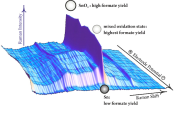
Operando Raman Spectroscopy: Studies on the Reactivity and Stability of SnO2 Nanoparticles During Electrochemical CO2 Reduction Reaction
The book chapter authored by
A. Kuzume, A. Dutta,
S. Vesztergom
and P. Broekmann
is published in K. Wandelt (ed): Encyclopedia of Interfacial Chemistry, 2018, pp. 217–226.
Abstract:
One of the great challenges of heterogeneous (electro-) catalysis research is to monitor the structural and chemical changes that a catalyst may itself undergo during the catalyzed process. These changes can influence not only the activity of the studied catalyst but also its selectivity toward the formation of a certain product and its stability during a long-term reaction process. Operando spectroscopy is of great value in this context because it provides means for a real-time observation of catalysts under reaction conditions and for establishing important structure–activity (selectivity) correlations. This article discusses the electrochemical reduction of CO2 on metal surfaces. Particular focus is laid on tin oxide electrodes, and the use of operando Raman spectroscopy for studying heterogeneous electro-catalytic processes. Reviewing the entire literatures of operando techniques is well beyond the scope of the article; yet we will provide some relevant literature to give a brief overview of electrochemical and interfacial studies on the electroreduction of CO2 on tin/tin oxide electrodes.
